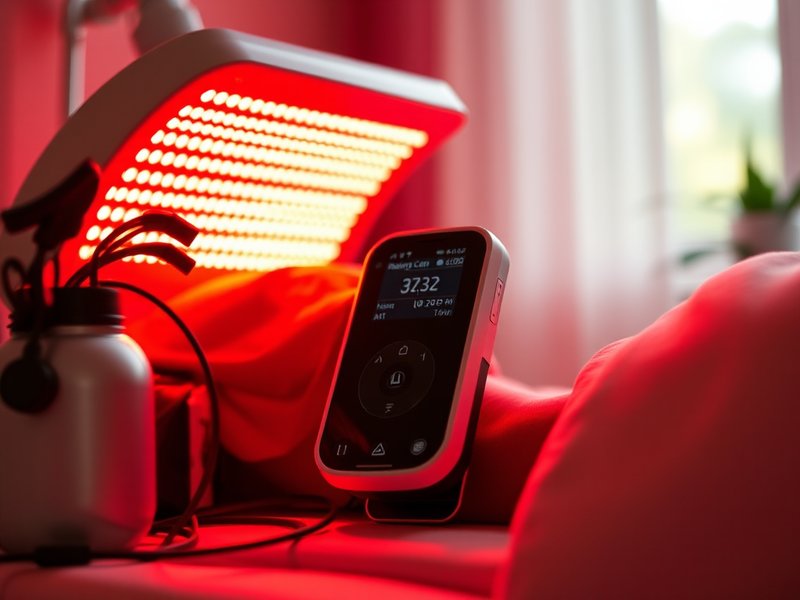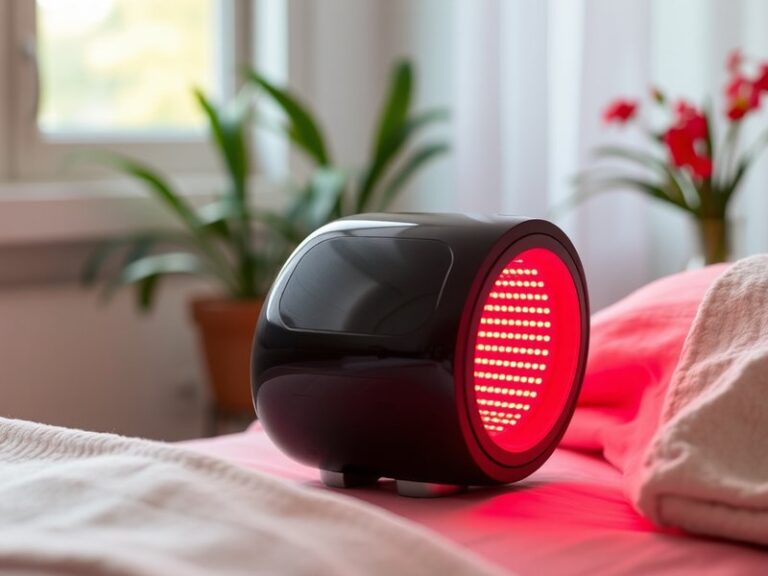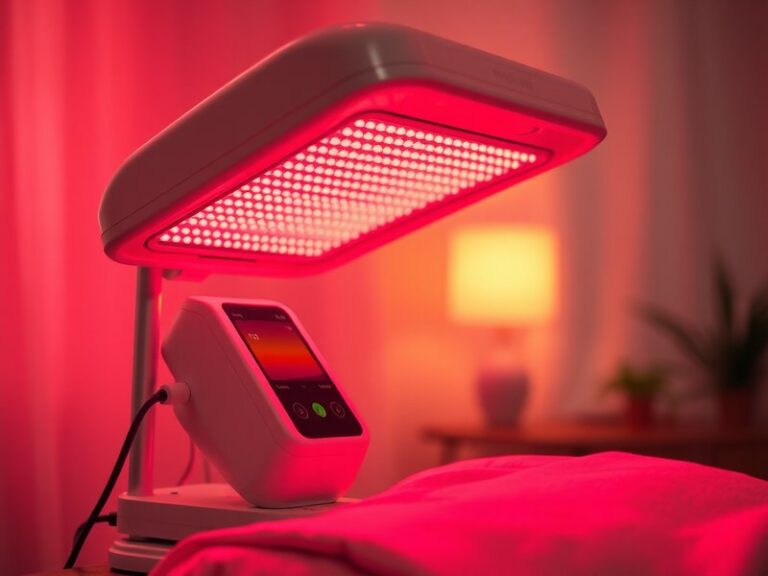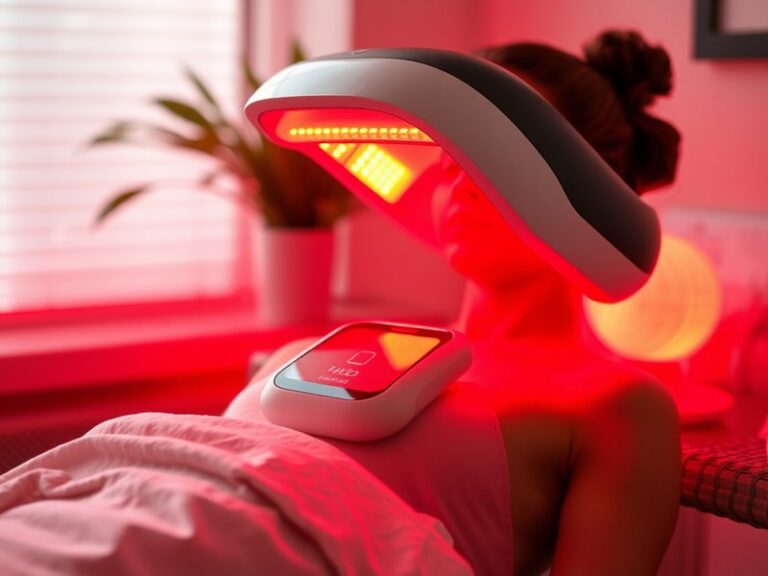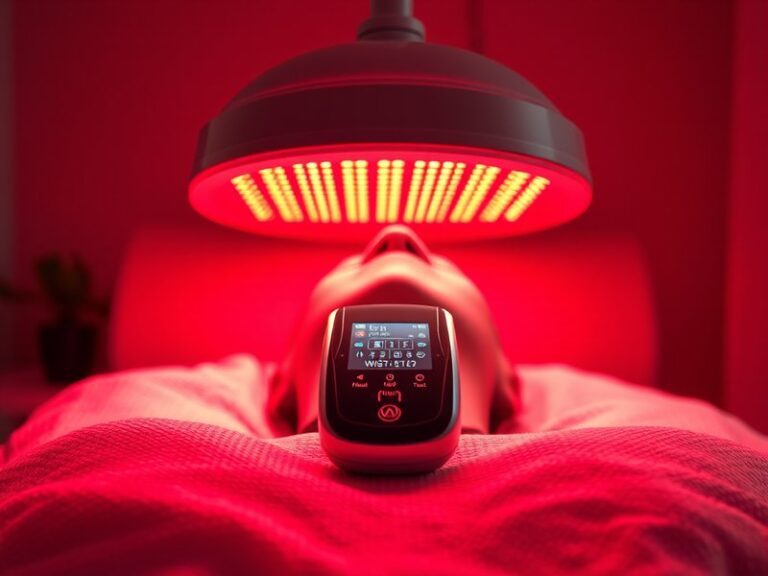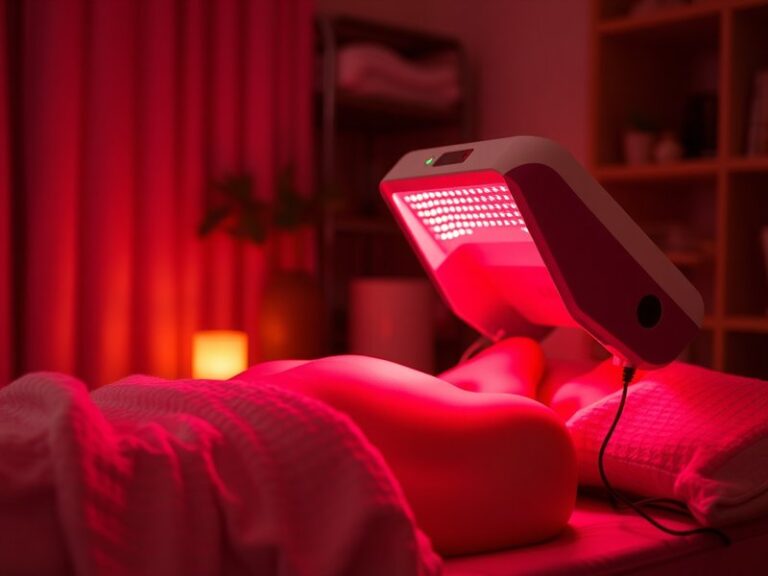What Is The Best Nm For Red Light Therapy?
What Is The Best nm For Red Light Therapy?
What wavelength of light provides the most health benefits when using red light therapy?
This article explores the optimal nanometers (nm) for red light therapy, discussing the science behind it, the benefits, and considerations you should keep in mind when choosing a therapy device. By the end, you’ll have a thorough understanding of how red light therapy works and what wavelengths are most effective.
Key Takeaways
- The most effective wavelengths for red light therapy typically range between 600 to 900 nm.
- Red light at 660 nm is particularly beneficial for promoting collagen production and healing.
- Near-infrared light at 850 nm penetrates deeper into the tissue, aiding in muscle recovery and pain relief.
What is Red Light Therapy?
Red light therapy (RLT) is a treatment that uses specific wavelengths of light to promote healing and various therapeutic effects on the body. This non-invasive procedure harnesses the power of light, specifically red and near-infrared wavelengths, to stimulate cellular function and promote regeneration.
The fundamental principle behind red light therapy lies in the ability of cells to absorb light. This process, known as photobiomodulation, activates various biological pathways, leading to improved energy production in the mitochondria, reduced inflammation, and enhanced tissue repair.
Understanding Wavelengths
Wavelengths are measured in nanometers (nm) and determine the color and penetration depth of light. For red light therapy, the primary focus lies within the spectrum of 600 to 900 nm, with significant effects noted at 660 nm and 850 nm. Understanding these ranges is crucial to selecting the most effective therapy.
What are the Benefits of Red Light Therapy?
Red light therapy offers numerous advantages for skin health, muscle recovery, and overall wellness. Here’s a closer look at its benefits.
Promotes Healing and Recovery
Red light therapy accelerates the healing process by boosting cellular energy production. Studies have shown that exposure to the optimal wavelengths can enhance wound healing and reduce recovery time from injuries.
Improves Skin Health
The application of red light at 660 nm encourages collagen synthesis, leading to better skin elasticity, improved texture, and reduced appearance of fine lines and wrinkles. Many aesthetic clinics utilize this specific wavelength in skin treatments.
Aids in Muscle Recovery and Pain Relief
Near-infrared light, particularly around 850 nm, penetrates deeper tissues, making it effective for muscle recovery. Athletes and fitness enthusiasts frequently use red light therapy to alleviate soreness and improve performance.
Discover our thoughts on Effects of Red Light Therapy on Fat Cells
Supports Mood and Sleep Quality
There is growing evidence that red light therapy can enhance mood and sleep quality. The calming effects of the therapy are believed to regulate circadian rhythms, promoting better sleep patterns.
Enhances Joint Health
Research has suggested that red light therapy can improve conditions like arthritis. Its anti-inflammatory effects help in reducing pain and promoting joint flexibility.
Is it Possible to Use Red Light Therapy at Home?
Yes, it is certainly feasible to administer red light therapy at home with the proper devices. Many manufacturers offer portable options that provide specific wavelengths targeting various therapeutic needs.
What are the Advantages of Using Red Light Therapy at Home?
Accessibility is a major benefit of at-home red light therapy. Users can conveniently integrate treatments into their daily routines. Moreover, home devices are typically more cost-effective than regular sessions at a professional clinic.
What are the Disadvantages of Using Red Light Therapy at Home?
However, at-home devices might vary in effectiveness compared to professional equipment. Users should also ensure they are using the correct wavelengths and adhere to safe usage guidelines to avoid ineffective treatment or injury.
What are the Things to Consider Before Using Red Light Therapy at Home?
Before starting red light therapy at home, several crucial factors should be considered to maximize safety and effectiveness.
Device Quality
It’s essential to invest in high-quality devices that emit the correct wavelengths. Look for products with specifications clearly stating their output in nanometers.
Duration and Frequency
Understanding proper treatment duration and frequency is vital. Overexposure can lead to diminishing returns or adverse effects, so follow the manufacturer’s guidelines carefully.
Skin Sensitivity
Individuals with sensitive skin or specific health conditions should consult a medical professional before beginning red light therapy. Tailoring treatment to one’s unique skin type is important for safety.
Consultation with a Healthcare Provider
Always consider consulting with a healthcare provider to discuss how red light therapy can fit into your overall health regimen, especially if you are on medication or have underlying health conditions.
What are the Alternatives to Red Light Therapy?
There are several alternatives to red light therapy that provide similar therapeutic benefits, which might be suitable for different health needs.
Blue Light Therapy
Often used for acne treatment, blue light therapy targets bacteria on the skin, helping to reduce outbreaks effectively.
Laser Therapy
High-intensity laser therapy can be used to promote faster healing and is often delivered in clinical settings, offering targeted treatments for pain relief and skin rejuvenation.
Find out the complete story Red Light Therapy Bed Frequency
Infrared Saunas
Infrared saunas utilize heat and light, promoting relaxation and detoxification. They may provide complementary benefits to red light therapy for muscle relaxation and general wellness.
Cold Laser Therapy
Similar to red light therapy, cold laser therapy uses low-level lasers to reduce inflammation and pain, suitable for various conditions.
Conclusion: Is it Recommended to Use Red Light Therapy?
In summary, red light therapy is a promising treatment modality backed by scientific research that emphasizes its benefits for healing, skin care, pain relief, and overall wellness. The optimal wavelengths for therapeutic effects typically range from 600 to 900 nm, with significant benefits from using devices that emit light specifically at 660 nm and 850 nm. However, individuals should consider device quality, skin sensitivity, and personal health conditions before opting for at-home therapy.
Frequently Asked Questions
What is the optimal wavelength for skin rejuvenation?
The optimal wavelength for skin rejuvenation is around 660 nm, as it effectively stimulates collagen production and improves overall skin health.
Can red light therapy be used for hair growth?
Yes, red light therapy at specific wavelengths around 650 nm can stimulate hair follicles and encourage hair growth in individuals experiencing hair loss.
How often should I use red light therapy?
It is generally recommended to use red light therapy 3-5 times a week, depending on the device and specific health goals. Following package guidelines is essential.
Is red light therapy safe for everyone?
While red light therapy is generally safe, individuals with certain conditions or sensitivities should consult a healthcare provider prior to treatment.
Can I combine red light therapy with other treatments?
Yes, red light therapy can often be combined with other treatments. However, it’s best to discuss this with a healthcare professional to ensure safe and effective use.
